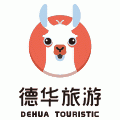|
  
- 积分
- 107660
- 威望
- 41024
- 金钱
- 6
- 阅读权限
- 130
- 性别
- 男
- 在线时间
- 3126 小时
|
2#
 发表于 2007-1-19 11:28
发表于 2007-1-19 11:28
| 只看该作者

同时,芮先生公布说,几天后接到了星巴克总裁兼CEO吉姆·当诺的回信,回信的主要内容是:1,6年前,星巴克是被中方邀请进故宫开设分店的;2,星巴克是抱着尊重中国文化传统的心态开设这一家分店的;3,星巴克已经尽了努力让这家店和周边人文环境相适应。信中只字未有搬出去的意思。
& ~# Q4 Z- @) A( D) E, b- f7 P: l2 p. h2 A2 m
迄今为止,博客们在网上对芮先生文章的反应也是五花八门的,从完全支持到完全不同意的都有。一位署名“SJ”的网民写道:“文化是能够进行交换的,但不是把什么东西都能混合在一起的,不然就会使味道变得古怪了。”另一位叫“Taoye”的网民写道:“故宫千方百计为外国人服务,但是到什么时候,中国政府才会同样努力地为她自己的人民服务呢?”还有一位“Yaya”写道:“这纯粹是狭隘的爱国主义。你们能不能不再把星巴克与中国文化和外国金钱联系起来?不就是一杯咖啡吗,就那么简单!”csuchen.de1 N: n( s9 B' A0 q! Y
人在德国 社区% Y0 m. ^2 M2 m7 I
Bloggers threaten to forbid Starbucks a place in ancient cityHalf a million protest at plans Museum agrees to a rethinkA Starbucks that occupies a tiny corner of the Forbidden City faces closure after an online backlash against a foreign franchise in the former home of the emperors of China. Half a million Chinese internet users have rushed to agree with Rui Chenggang, who sparked the controversy with his blog Why Starbucks needs to get out of the Forbidden City, posted on January 12.csuchen.de" c: I5 {9 _* {6 N
2 C6 }- i( P' y5 I; O' D
Mr Rui wrote that a Starbucks was obscenely out of place amid the 178-acre (71-hectare) complex of throne rooms, pavilions and gardens that was home to 24 emperors before the end of imperial rule in 1911.
. X( f- D/ w& V2 G1 S“This is not globalisation but an erosion of Chinese culture,” said Mr Rui, who is an anchorman on CCTV9, an Englishlanguage state television channel. Now the cultural mandarins of China are considering closing the coffee shop. Most comments agreed with Mr Rui’s view that a foreign café was inappropriate inside a 15th-century building that is a symbol of Chinese civilisation. Some attacked its presence as a disgrace, while others criticised the Palace Museum, which administers the Forbidden City, as a “slave of money”. At first the museum defended the coffee shop, saying that it had done no damage and blended in well with its surroundings. “We allowed it because we wanted to have a more international service available,” it said. There were nearly nine million visitors to the sprawling palace last year, including 1.6 million foreigners. Yesterday, however, the Palace Museum appeared ready to bow to online opinion. Feng Nai’en, a museum spokesman, said: “The museum is working with Starbucks to find a solution by June in response to the protests. Whether or not Starbucks remains depends on the entire design plan that will be released in the first half of the year.” The Forbidden City branch is low-key, occupying barely 20sq m. It is in a small corner of a giftshop that visitors come upon only if they seek it out, about halfway through their tour of imperial pavilions. Many Chinese coffee shops and snack bars are also scattered around the Forbidden City and about a third have already been ordered to move out in a reorganisation of services. Mr Rui told The Times that he was astonished at the response to his blog and at the power of the internet. “I’m not attacking Starbucks. It’s not that. Personally, I welcome Starbucks to China and hope they will be successful but I just think it’s not proper to open a Starbucks in the Forbidden City. There should be a limit to protect our cultural traditions.” The outlet opened in 2000 amid a media furore so severe that the museum authorities considered revoking its lease after two months. Eden Woon, Starbucks vice-president for Greater China, said that the company has no plan to leave the site. & F& n4 Y8 d/ o; B$ f+ {: a
# @; m- j/ o9 e! N' E2 O( x B
The Times January 19, 2007
' ]9 i9 _' w( ~* a1 Y: m人在德国 社区9 G3 ~! d) q, B4 ?# u2 j
[ 本帖最后由 日月光 于 2007-1-19 11:29 编辑 ] |
|

















